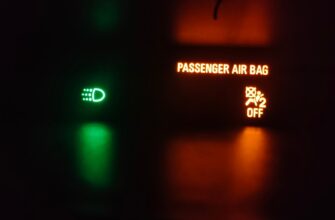Understanding Indonesia Rupiah to USD Conversion
Converting Indonesian Rupiah (IDR) to US Dollars (USD) is crucial for travelers, expats, investors, and businesses engaged in cross-border transactions. The IDR/USD exchange rate fluctuates constantly due to economic factors, impacting how much your money is worth. Whether you’re planning a Bali vacation, managing overseas payments, or analyzing investments, understanding this conversion helps avoid costly mistakes and maximize value. This guide covers real-time rates, conversion methods, historical trends, and expert tips.
Factors Influencing the IDR to USD Exchange Rate
The IDR/USD rate is volatile, driven by multiple variables:
- Economic Indicators: Indonesia’s inflation, GDP growth, and trade balance directly affect Rupiah strength. High inflation often weakens IDR.
- Central Bank Policies: Bank Indonesia’s interest rate decisions and market interventions can stabilize or devalue the currency.
- Global USD Demand: As the world’s reserve currency, USD strengthens during geopolitical uncertainty, pressuring emerging currencies like IDR.
- Commodity Prices: Indonesia’s exports (palm oil, coal, nickel) impact foreign reserves. Price drops can weaken IDR.
- Political Stability: Elections or policy shifts may cause investor uncertainty, leading to Rupiah depreciation.
How to Convert IDR to USD: Methods Compared
Choose the right method to minimize fees and maximize USD received:
- Banks: Reliable but often have high fees (3–5%) and less competitive rates. Ideal for large transfers.
- Currency Exchange Offices: Competitive rates in tourist areas (e.g., Bali, Jakarta). Avoid airport kiosks – rates are 10–15% worse.
- ATMs: Withdraw USD directly using debit cards. Check your bank’s foreign transaction fees (typically 1–3%).
- Online Platforms (Wise, Revolut): Best for low-cost transfers. Real-time rates with fees under 1%. Ideal for recurring payments.
- Credit Cards: Convenient for purchases but incur dynamic currency conversion (DCC) fees up to 7%. Always pay in IDR.
5 Tips for Getting the Best IDR to USD Rate
- Monitor Live Rates: Use apps like XE or Google Finance to track fluctuations. Convert when USD weakens.
- Avoid Airport/Hotel Exchanges: Rates here include 10–20% premiums. Use local banks or authorized money changers.
- Negotiate at Exchange Bureaus: Larger transactions (over $500) often qualify for better rates – ask!
- Use Fee-Free Cards: Select debit/credit cards with zero foreign transaction fees to save 3% per conversion.
- Time High-Volume Transfers: Transfer during Indonesian market hours (9 AM–3 PM WIB) for optimal liquidity.
Historical IDR/USD Trends: A Decade in Review
The Rupiah has experienced significant volatility against the USD. In 2015, IDR plummeted to ~14,000/USD during the US Fed rate hike and China’s slowdown. By 2020, COVID-19 pushed it to 16,000/USD. Recent recovery (2022–2023) stabilized rates near 15,000–16,000/USD, supported by Indonesia’s commodity exports and tourism rebound. Long-term, IDR depreciates ~4% annually against USD due to inflation differentials. Always check current rates before converting.
Frequently Asked Questions (FAQ)
Q1: What is the current IDR to USD exchange rate?
A: Rates change by the minute. As of [Current Date], 1 USD ≈ 15,500 IDR (check XE.com for live updates).
Q2: Where can I convert IDR to USD with the lowest fees?
A: Online services like Wise offer the lowest fees (0.5–1%). For cash, compare rates at authorized money changers in major cities.
Q3: Are there limits on USD cash I can bring into Indonesia?
A: Yes. You must declare cash exceeding IDR 100 million (~$6,450) or equivalent. Undeclared amounts may be confiscated.
Q4: Is it better to convert USD in Indonesia or my home country?
A: Converting in Indonesia usually offers better rates. Withdraw IDR from ATMs upon arrival using a fee-free card for optimal value.
Q5: How do I avoid hidden fees during conversion?
A: Always ask for the “net rate” after fees, reject DCC (Dynamic Currency Conversion), and use mid-market rate comparisons.
Final Tip: Bookmark a reliable currency converter, set rate alerts, and prioritize digital transfers for large sums. Staying informed ensures your Rupiah conversions are cost-effective and stress-free.








